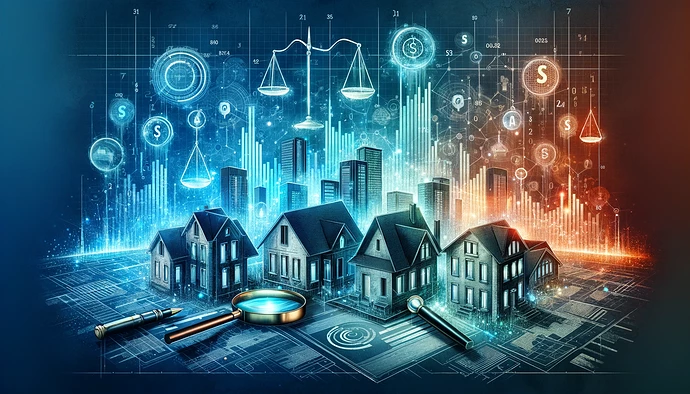The Definitive Checklist for Valuing Properties
1. Lease Documentation Analysis
- Verify the existence of written leases for all tenants.
- Obtain complete lease documents, including addendums and modifications.
- Review lease terms for rights and responsibilities of both parties.
- Consult a legal advisor for lease analysis.
- Assess potential upside in leases (higher income/stability of tenancy).
2. Analyzing Lease Types
- Evaluate residential leases for hidden clauses like future rent concessions or limits on rent increases.
- Analyze commercial leases for key terms like signage rights, expansion/contraction rights, and tenant mix restrictions.
- Prepare written lease abstracts for commercial properties.
- Obtain lease estoppel certificates from commercial tenants.
- Review tenants’ financial statements and recent sales information.
3. Strategic Lease Renewal Planning
- Check lease expiration dates and prepare for negotiations based on current market conditions.
- Estimate costs for tenant renewals, including concessions and improvements.
4. Economic Principles of Property Valuation
- Evaluate demand, utility, scarcity, and transferability of the property.
- Consider the effects of regression, progression, and conformity on property value.
- Determine the property’s highest and best use.
- Understand the difference between fair market value and investment value.
- Avoid overpaying based on investment value.
5. Sourcing Valuation Information
- Consult professional appraisers for an objective property value.
- Use Competitive Market Analysis (CMA) or Broker Price Opinion (BPO) from brokers/agents.
- Consider the seller’s own valuation research.
6. Value Benchmarks
7. Avoiding Overbuilding Risks
- Compare investment property cost with new construction cost.
- Avoid investing in markets where new construction is more economical than existing properties.

 You are missing out if you haven’t yet subscribed to our YouTube channel.
You are missing out if you haven’t yet subscribed to our YouTube channel.
8. ROI Analysis in Investment
- Analyze four elements: net cash flow, tax benefits, equity buildup, and appreciation.
- Avoid basing investment decisions on emotions.
9. Figuring Net Operating Income (NOI)
- Calculate projected NOI.
- Use current and projected NOI for valuation.
- Record and verify all income using a zero-based budget concept.
- Assess tenants’ financial strength and future potential.
- Calculate Gross Potential Income (GPI) and Effective Gross Income (EGI).
- Account for vacancies, concessions, and collection losses.
10. Operating Expenses Forecasting
- Forecast projected operating expenses using a zero-based budget.
- Include management fees even if self-managing.
- Obtain updated quotes for insurance and utilities.
- Consider all other operating costs (landscaping, maintenance, etc.).
11. Cash Flow Analysis
- Determine Before-Tax Cash Flow: NOI – Debt Service – Capital Improvements.
- Account for debt service based on firm financing commitments.
- Plan and budget for capital improvements.
12. Lease Type Impact Assessment
- Understand different lease types: Gross, Modified Gross, Net.
- Evaluate impact of lease types on expenses and NOI.
- Account for CAM charges in commercial properties.
13. Property Valuation Approaches
- Apply Market Data (Sales Comparison) Approach.
- Use Cost Approach for unique or new properties.
- Employ Income Capitalization Approach for income-generating properties.
- Reconcile results from different valuation approaches.
14. Finalizing Investment Decisions
- Synthesize all collected data to make a comprehensive purchase decision.
- Assess if the property’s asking price aligns with your valuation and investment goals.
15. Examining Seller Verification
- Scrutinize the seller’s claims about rental rates and operating expenses.
- Verify accuracy of provided financial statements and rent rolls.
- Adjust your valuation based on realistic income and expense projections.
16. Choosing the Right Numbers
- Decide whether to base your decision on historical or projected financials.
- Consider market trends and potential for income growth or expense reduction.
- Use the most realistic and applicable set of numbers for your investment strategy.

Make It Real
 Start Your Journey Today!
Start Your Journey Today!
You are missing out if you haven’t yet subscribed to our YouTube channel.


